Shift to thrift
An article by Sonia Kovacevic
With 80 billion items of clothing being consumed annually, there is a staggering 25 billion pounds of clothing waste per year in the United States alone. This mass production and in turn waste has been fuelled by the Fast Fashion Industry which has turned 2-4 seasons into 50-100 micro-seasons.
A further consequence is that our sense of connection with the production line and the clothes we wear has been dehumanised. For a cheap new outfit, we are compromising fundamental values of humanity, and in turn supporting detrimental environmental impacts and human rights breaches.
Although there are still waste issues with thrift shopping associated with large amounts of clothing still ending up in landfill, change begins with the individual and shifting to thrift is a simple and effective way to become a more conscious consumer. It not only gives power back to the individual in actively reducing their contribution to the Fast Fashion system, but allows one to shop on their own agenda, finding unique one-off pieces that reignite the relationship one should have with clothing as our second skin, and fashion as an avenue of self-expression.
The goal is a capsule closet, with high quality minimal products that have maximum versatility. So, where do you begin?
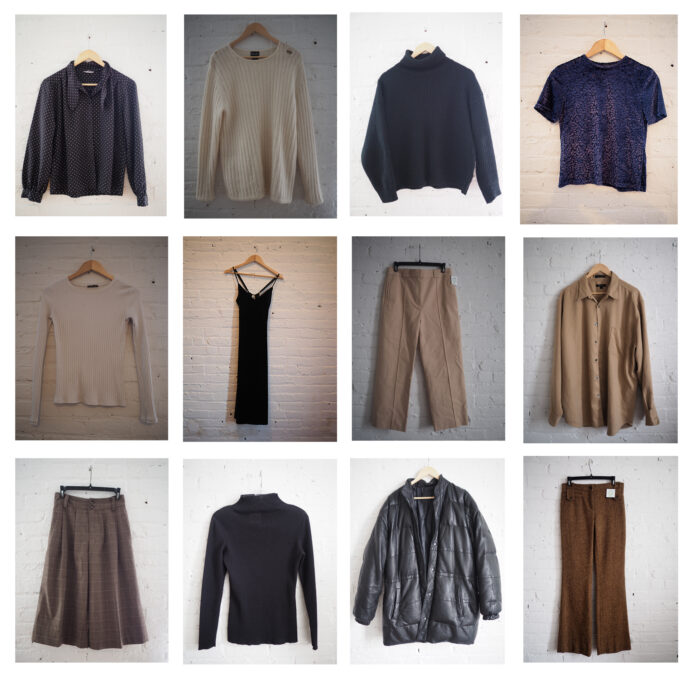
KNOW YOUR WARDROBE
The items you wear and love don’t need to remind you. It is those you come across and think “Oh, maybe I’ll wear that one way” that have heard it all before. If you can’t remember the last time you wore it, it is a good indication that you probably won’t wear it any time soon. Set it aside and trade it in at the thrift store to give your clothes a second chance, and receive some cash or store credit for your next purchase.
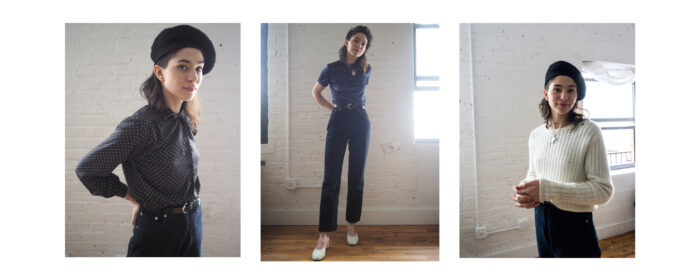
WHAT IS YOUR PRIORITY?
Stores can be overwhelming so focus on what you need first. Head towards a colour palette you know you feel comfortable wearing and the item of clothing you are lacking. If you are ready for a good hunt, push everything to one end of the rack and flick through piece by piece until something catches your eye.
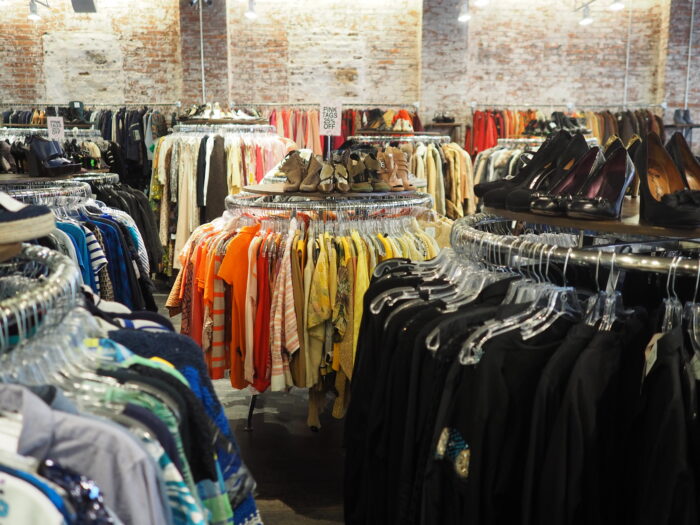
UNDERSTAND THE MATERIAL WORLD
Polyster, Acrylic and Nylon are all plastic. These synthetic polymers are made from a combination of coal and petroleum and treated with various toxins to give their specific finishes. Some, like Acrylic are not only highly flammable, but have also been found to be carcinogenic. Not only this, but with each wash, these synthetic fabrics can release more than 700,000 micro-plastics into the oceans. This is killing marine life, polluting the oceans and ending up in our food chain.
Other fabrics to avoid are Rayon and Acetate. Although they are made from wood pulp and cellulose, they are often treated with various chemicals for material endurance.
Natural fibres may also be treated at some point during the production process but are much better options, not only for the environment, but your health. Look out for Organic Cotton, Silk, Linen, Hemp, Wool and Cashmere. You will be surprised at how many items this eliminates.
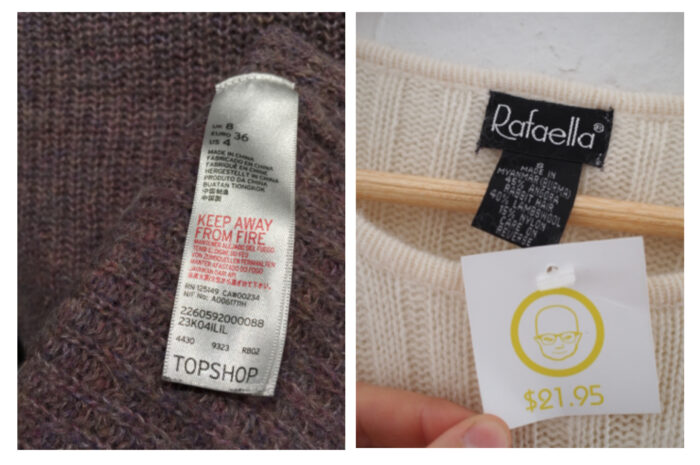
BE PATIENT
If you are in a rush or simply not in the mood to sift through hundreds of items of clothing, it probably isn’t worth the stress. Wear an outfit that is easy to change in and out of and set aside a decent amount of time where you can comfortably try on different pieces. Remember that size isn’t everything while thrift shopping with clothes not only mixed up, but not all aligned to the same sizing restraints.
DO YOU LOVE IT?
We all get that feeling when we put something on and our eyes either light up, or we begin to um and ah, justifying why we think we think it’s cool and “might wear it one day”
- If it doesn’t fit right and you know you don’t have a great track record of taking things to the tailor, don’t buy it! It will end up at the back of our closet, blocking good Feng Shui!
- Will you wear it 30 times? Not ‘can you’ but will you. Be honest with yourself and think of other gems you can match it with from your existing wardrobe.
- If you love it, don’t be deterred by some holes. Get creative and either stitch it up, cover it with a patch or distress it even more.
- If you’re not 100%, put it on hold and see how you feel a few hours later.
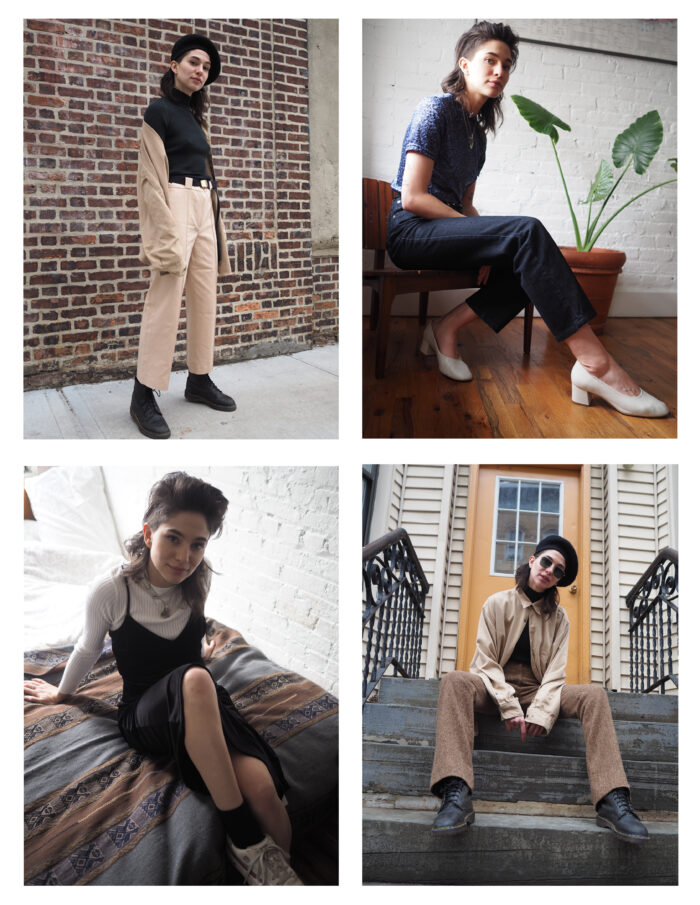
DON’T BE FOOLED
Just because it is Alexander Wang at an eighth of a price, does not mean you should buy it. Stay focused on the core values above and your goal in mind. Although thrift shopping is one avenue of decreasing demand, and a better version of consumerism, it is still consumerism and essentially fuelling a socially constructed mindset revolving around aesthetic and desire. Yes, become an active citizen through your wardrobe and use fashion as a tool for empowerment, but also go beyond just voting with your dollar. Take the time to engage in the conversation and reach out to brands and governments for accountability. #WhoMadeMyClothes
All outfits sourced second-hand





